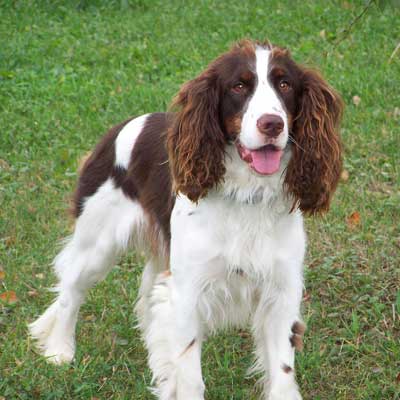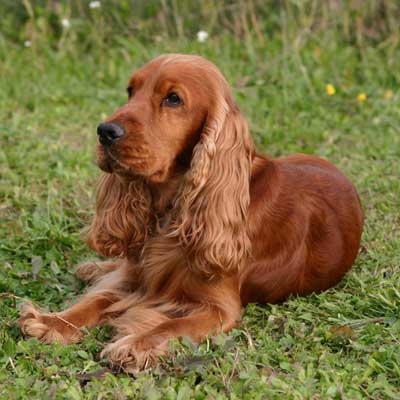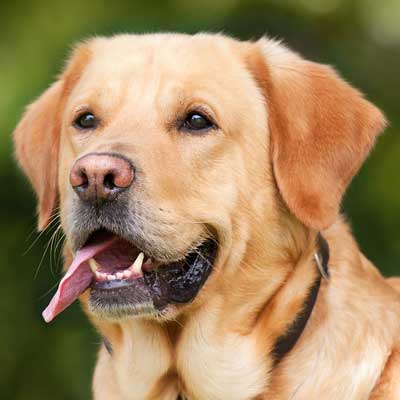English Springer Spaniel
Always happy and playful, he is a fantastic friend
Breed is of ancient and pure origins, oldest of sporting gundogs; original purpose was finding and springing game for net, falcon or greyhound.Now used to find, flush and retrieve game for gun.
-
Head - cranial region
Skull: Of medium length, fairly broad, slightly rounded, rising from foreface, making a brow or stop, divided by fluting between eyes, dying away along forehead towards occipital bone which should not be prominent. -
Head - Facial region
Nose: Nostrils well developed.
Muzzle: Foreface of proportionate length to skull, fairly broad and deep, well chiselled below eyes.
Lips: Fairly deep and square.
Jaws/Teeth: Jaws strong, with a perfect, regular and complete scissor bite, i.e. upper teeth closely overlapping lower teeth and set square to the jaws.
Cheeks: Flat.
Eyes: Medium size, almond-shaped, not prominent nor sunken, well set in (not showing haw), alert, kind expression. Dark hazel.
Light eyes undesirable.
Ears: Lobular, good length and width, fairly close to head, set in line with eye. Nicely feathered. -
Neck
Good length, strong and muscular, free from throatiness,
slightly arched, tapering towards head. -
Body
Strong, neither too long nor too short.
Loin: Muscular, strong with slight arch and well coupled.
Chest: Deep, well developed. Well sprung ribs. -
Tail
Previously customarily docked.
Docked: Set low, never carried above level of back. Well feathered with lively action.
Undocked: Set low, never carried above level of back. Well feathered with lively action. In balance with the rest of the dog. -
Forequarters
General appearance: Forelegs straight and well boned.
Shoulder: Sloping and well laid.
Elbow: Set well to body.
Metacarpus (Pastern): Strong, flexible.
Forefeet: Tight, compact, well rounded, with strong, full pads -
Hindquarters
General appearance: Hind legs well let down.
Thigh: Broad, muscular, well developed.
Stifle: Moderately bent.
Hock: Moderately bent. Coarse hocks undesirable.
Hind feet: Tight, compact, well rounded, with strong, full pads. -
Gait / Movement
Strictly his own. Forelegs swing straight forward from shoulder, throwing feet well forward in an easy free
manner. Hocks driving well under body, following in line with forelegs. At slow movement may have a pacing stride typical of this breed. -
Coat / Hair
Close, straight and weather resisting, never coarse. Moderate feathering on ears, forelegs, body and hindquarters. -
Coat / Colour
Liver and white, black and white, or either of these colours
with tan markings. -
Size
Approximate height at withers: 51 cm (20 ins). -
Faults
Any departure from the foregoing points should be
considered a fault and the seriousness with which the fault should be regarded should be in exact proportion to its degree and its effect upon the health and welfare of the dog and on its ability to perform its traditional work. -
Disqualifying faults
• Aggressive or overly shy.
• Any dog clearly showing physical or behavioural abnormalities.
N.B.:
• Male animals should have two apparently normal testicles fully descended into the scrotum.
• Only functionally and clinically healthy dogs, with breed typical conformation should be used for breeding.






